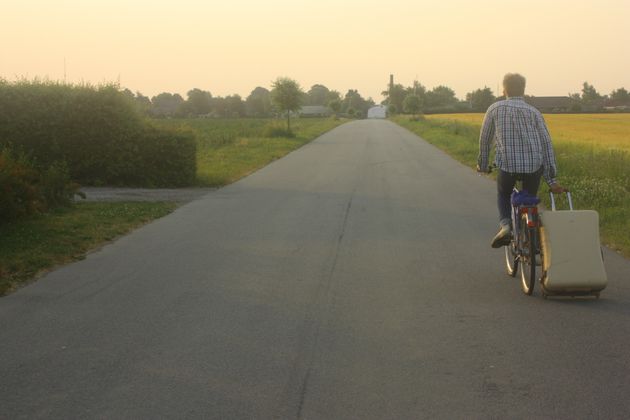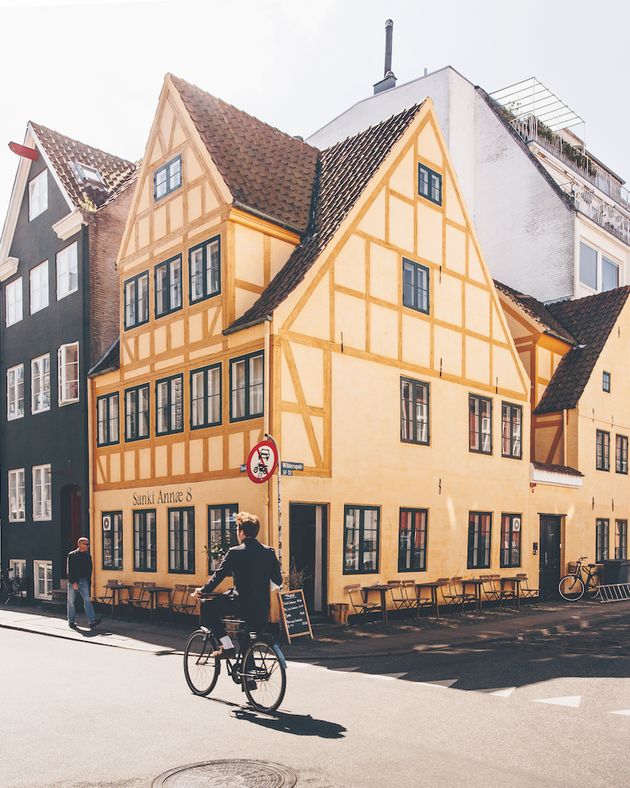Kristoffer Tjalve was born in Copenhagen and has been cycling since as long as he can remember. “I learned on the pavements with my parents running behind me with a stick attached to the bike until I managed to keep the balance,” he recalls – it was important for them that he could cycle before starting school. “Before I used the two-wheeled bike I was on the three-wheel version in the yard. I’ve basically biked since forever.”
Now at 30 years old, Kristoffer has lived and cycled in many different cities including Singapore, Brussels, Milan and Budapest and can tell first-hand how different it is to cycle in Copenhagen – a city voted the best in the world for cycling in 2017. Many people travel by bike, he says, because it’s the fastest way to get around, cheap and has great environmental benefits. “We have separate bike lanes from the roads and we learn how to bike safely in school so it’s the way everyone gets around.”

Kristoffer’s love of life on two wheels is far from unusual. In 2016, there were more than five times more bikes in Copenhagen than cars – that’s approximately 675,000 bicycles and 120,000 cars – and one quarter of all families in Copenhagen with 2 children have a cargo bike, where kids sit in a box at the front of the bicycle. “Copenhageners love their bikes,” a Twitter user tells me. “Cycling is fast, convenient, healthy, climate-friendly, enjoyable – and cheap.”
This is all no coincidence. Ninna Hedeager Olsen, the city’s mayor of technical and environmental affairs tells me Copenhagen has been a cycling city for over 100 years, and has been through the rise of cars in the 60s as well as citizen protests in the 70s and 80s with claims to give the city back to cyclists and pedestrians. “Since then, politicians, professional staff and local stakeholders have joined forces to ensure a dedicated priority of attractive, safe and coherent cycling facilities,” she says.
Not only that, but the city is well aware of its prestige around cycling, and they want to remain at the top. “The last ten years the focus has further increased with the official ambition to become the world’s best city for cyclists, a title we earned in 2017,” says Olsen.

And the city is definitely working hard to retain that title. In the last decade, Copenhagen has invested more than £155 million in cycling infrastructure. The government’s figures show 76% of cyclists “feel safe in traffic” and they ride an average of 4.9 million km between each serious bike accident. “This allows for all types of citizens to take up cycling across ages, income levels and physical shape,” Olsen tells me. “We have 379km of separated bicycle tracks. It is not rocket science, but the result of continuous political priority. To become a cycling city is just a matter of priorities. In that sense, Copenhagen isn’t anything special. You just need to prioritise.”
Emma Maslin, 37, who is from the UK but lived in Copenhagen in 2002, found the differences between British cycling and cycling there extremely obvious when she was studying there during her final year of university. Biking became central to her experience as soon as she arrived, “I was matched with a Danish buddy and on my first weekend there, she took me to an auction where they sell off all the abandoned bikes that are left all over the city,” she says. “I bought one for next to nothing (with her help!) and was on my way.”
Maslin’s dad is a big cyclist so she has always had a bike, but she says cycling was certainly different in Copenhagen compared to the UK as the cycle lanes make it so much more safe. “It’s unusual to see a bike lane in a city or town here,” she says. “To make cycling safer, other cities would do well to see how the Danes design the bike lanes – they are next to the pavement and separated from cars by the parked car bays. You feel well away from the motorised road traffic!”

The sheer volume of cyclists in Copenhagen means car drivers are much more aware of their presence. The city’s strategy isn’t complicated, but what it comes down to is the city’s infrastructure. The government built new bicycle bridges across the harbour making it fast and easy to get from one part of town to another. They physically separated cycle tracks along almost all major roads, some places up to four meters wide, so cyclists feel safe. They have made green routes away from motorised traffic where the speed is lower and the surroundings green and inviting.
So what can the UK learn from this cycling city? “Making your city appealing to cyclists has a lot to do with the design of your city,” says Olsen. “Dedicated bicycle infrastructure is a prerequisite to make people feel safe. Another central measure is to lower the speed limit for cars and prioritise the traffic flow in favour of the more space effective transport modes such as cycling and public transport. On a macro level you can design your urban planning in favour of dense, multifunctional neighbourhoods to decrease travel demand and lower the dependency on cars.
“And finally you can seek to make cycling an accepted mode of transportation in its own right, so that cycling in your normal clothes in your own speed becomes the norm, not the exception.”
Sounds like they’ve got it sorted.
Reckon the UK will catch up anytime soon? Let me know what you think your city needs to do to encourage more people to cycle. Email amy.packham@huffpost.com.
